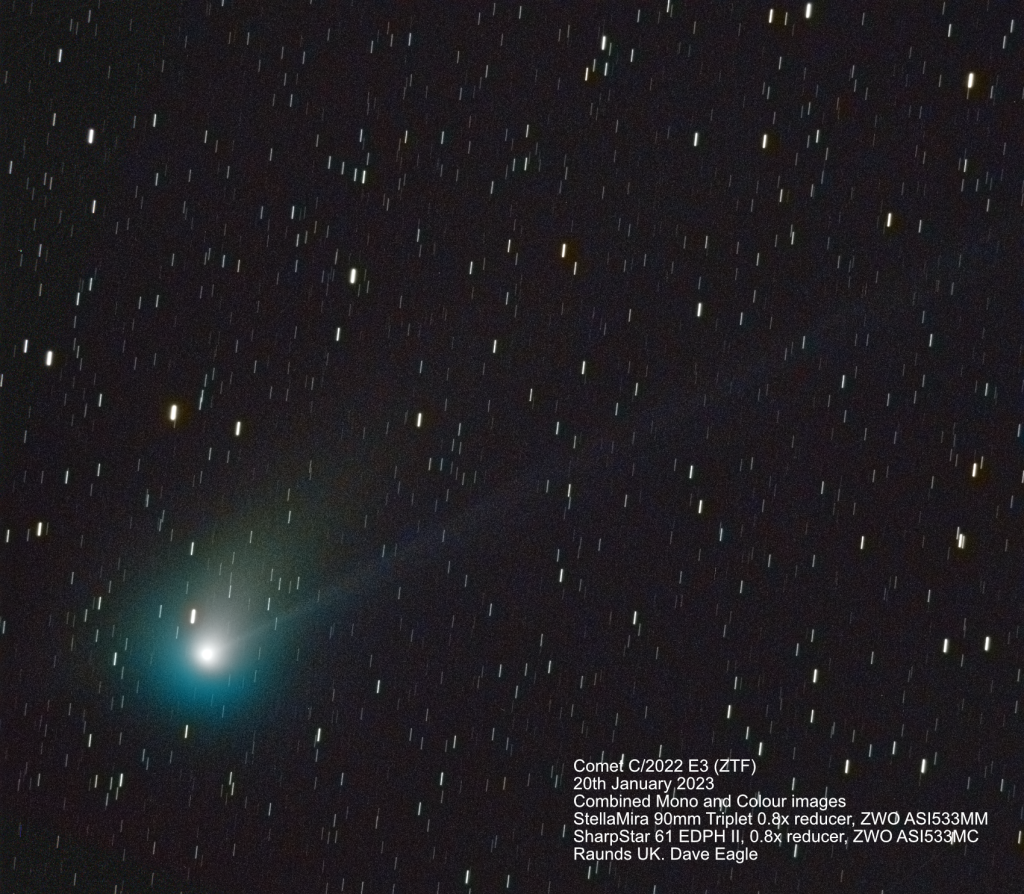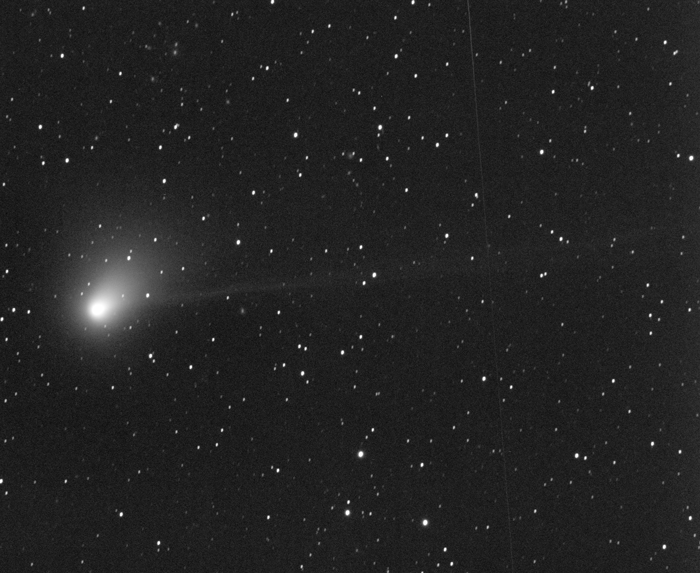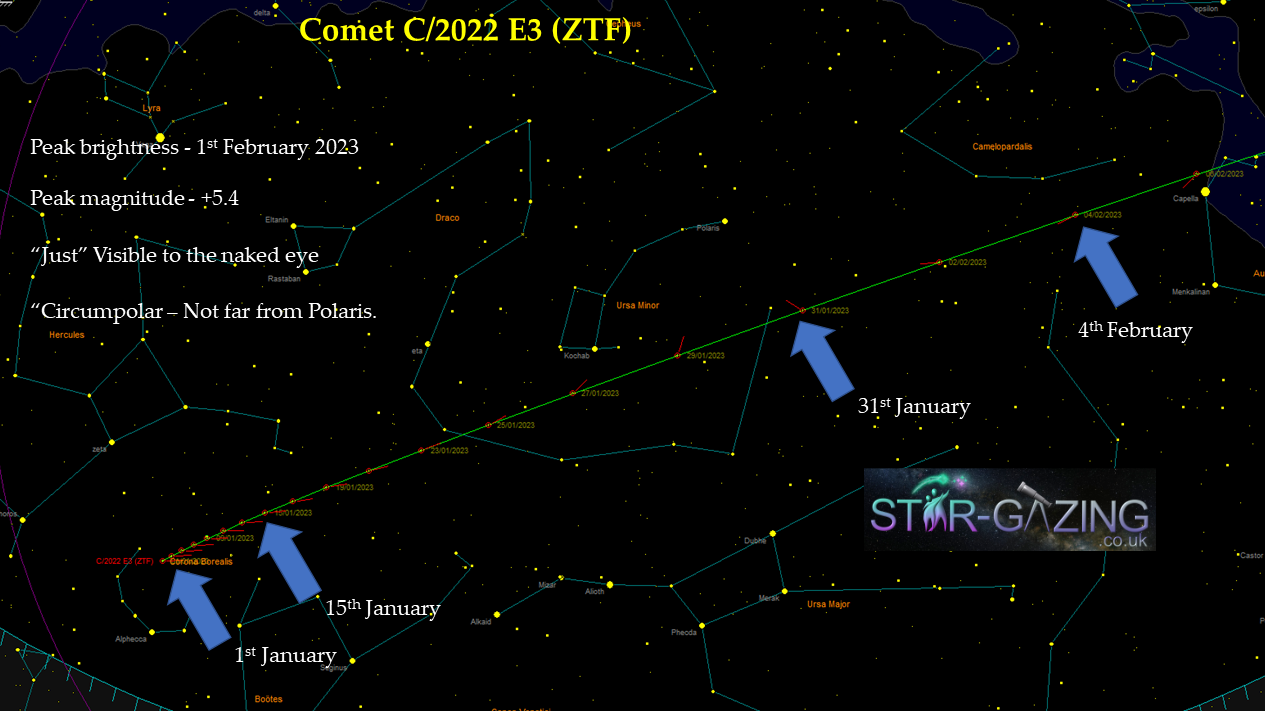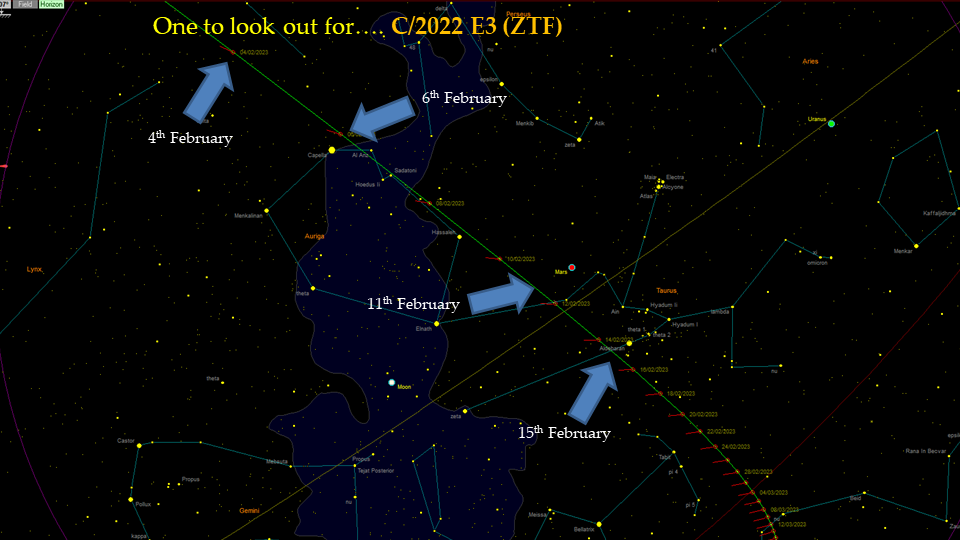Comet C/2022 E3 (ZTF) is meant to become just about bright enough to be seen with the naked eye in the new year.
It is currently at about 7th magnitude (3rd January 2023) in the northern part of the constellation of Corona Borealis, low down in the early morning eastern sky.
Over January, it heads northwards, slowly picking up speed and brightening.
Image of the comet taken on the morning of the 20th of January.

Animation of C/2022 E3 (ZTF) moving northwards through Corona Borealis on the 6th of January in bright moonlight.
Colour image of Comet C/2022 E3 (ZTF) taken 3rd January 2023 through the murk.
At the start of the new year it is located just north of Corona Borealis.
It reaches Perihelion (closest to The Sun) on the 12th of January.
It reaches the middle of Draco’s body by the 24th of January, where it should now be a lot brighter.
By the end of January the comet is passing close to Ursa Minor and Polaris, so will be at a respectable altitude throughout the night.
It reaches its maximum magnitude of +5.4 on the 1st of February, when it should “just” be visible the the naked eye from a dark sky.
The beginning of February is when the comet will be at its closest to Earth.
A bright gibbous Moon will be visible in the evening sky, so may be best to observe or image the comet in the morning sky, once The Moon has set.
It’s not going to be a spectacular comet, but should give us something nice to look at or image.
On the 6th of February the comet moves through Auriga passings very close to the first magnitude star Capella.
The Moon rises a little bit later that night, so get out before that rises fairly quickly after dark.
Moving southwards by the 11th of February the comet passes to the east of Mars in Taurus.
The Moon is now well out of the way and visible in the morning sky, so will not interfere with viewing or imaging the comet in the evenings.
A few days later on the 14th & 15th of February it passes to the east of the first magnitude star Aldebaran and the Hyades open star cluster.
After passing through Taurus, the apparent motion of the comet is now slowing as it fades.
It passes just west of the shield of Orion the last two weeks of March and then on into Eridanus.
The comet is moving in a large retrograde loop, which swings it just south of the first magnitude star Rigel in the foot of Orion towards the end of April.
It’s developing very nicely now, so let’s hope for a good show.
🤞
The maps below show the path of the comet from January until March.





Hi, Dave! Just wanted to thank you for the best instructions online for how to add comets to Stellarium! Just added 81P/Wild to the list, thanks to your step-by-step, crystal clear instructions. Thank you for taking the time to do this!
Thank you for your kind comment.
You are very welcome. 😃
Dave